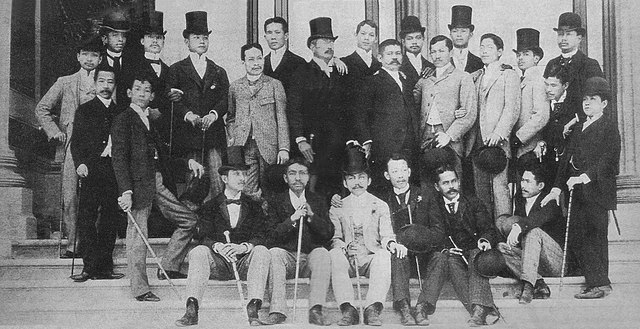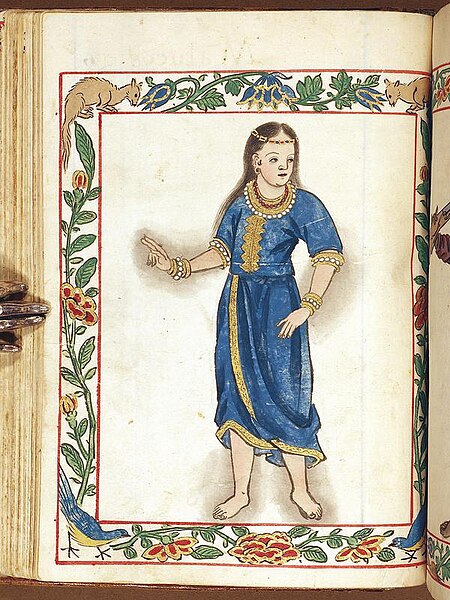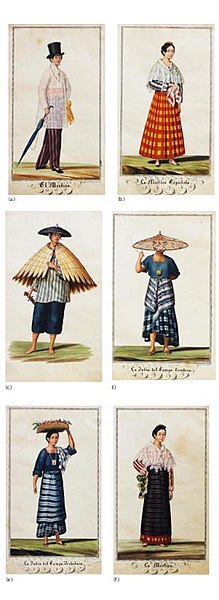The Ilustrados constituted the Filipino intelligentsia during the Spanish colonial period in the late 19th century. Elsewhere in New Spain, the term gente de razón carried a similar meaning.
Ilustrados in Madrid, c.1890; Standing clockwise from left: Vicente Francisco, Cajigas, José Abreu, Mariano Abella, Dominador Gómez, Francisco Tongio Liongson, Flaviano Cordecruz, a Tuazon from Malabon, Alejandro Yance de Lara, Lauro Dimayuga, Marcelo H. del Pilar, Gregorio Aguilera, José Rizal, José Alejandrino, Baldomero Roxas, Moises Salvador, Modesto Reyes, Gaudencio Juanengo, Pablo Rianzares Bautista; Seated from left: Dr. Santamaria, Candido Morada, Damaso Ponce, Ariston Bautista, Pedro Serrano Lactao, and
Three prominent ilustrados in Spain: Dr. José Rizal, Marcelo H. del Pilar and Mariano Ponce (from left to right). Photo was taken in Spain in 1890.
Filipinos are citizens or people identified with the country of the Philippines. The majority of Filipinos today are predominantly Catholic and come from various Austronesian peoples, all typically speaking Filipino, English, or other Philippine languages. Despite formerly being subject to Spanish colonialism, only around 2–4% of Filipinos are fluent in Spanish. Currently, there are more than 185 ethnolinguistic groups in the Philippines each with its own language, identity, culture, tradition, and history.
The Negritos are descendants of one of the earliest groups of modern humans to reach the Philippines
Binukot from Visayas, c. 1590 Boxer Codex
Tipos del País works by Justiniano Asuncion
Economic Life in Spanish Colonial Philippines, with Native and Sangley Chinese traders






